5 Reasons to Plant White Mistflower (Ageratina havanensis)
Want to help pollinators this fall? Plant White Mistflower (Ageratina havanensis)! Also known by the common names Shrubby Boneset and Havana Snakeroot, the fuzzy white blooms of this native plant will bring ALL the pollinators to your yard in October and November.

Native to the Edwards Plateau in central Texas, it is one of my favorite native plants for providing a rare source of late-season nectar. Did I mention it isn’t picky about its light requirement and is deer resistant? Sign me up!
Want to attract more butterflies to your yard? Be sure to download my FREE Pollinator Nectar Plants PDF. Take this handy one-pager to the nursery to get the native plants that pollinators LOVE!
5 Reasons to Plant White Mistflower (Ageratina havanensis)
1. Excellent fall nectar plant
Too often we forget about having fall-blooming plants in our yard, focusing on late spring and summer. However, fall nectar is critical for migrating Monarchs and other pollinators. This Texas native is the perfect solution. White Mistflower’s profuse blossoms are covered in pollinators of every shape and size.
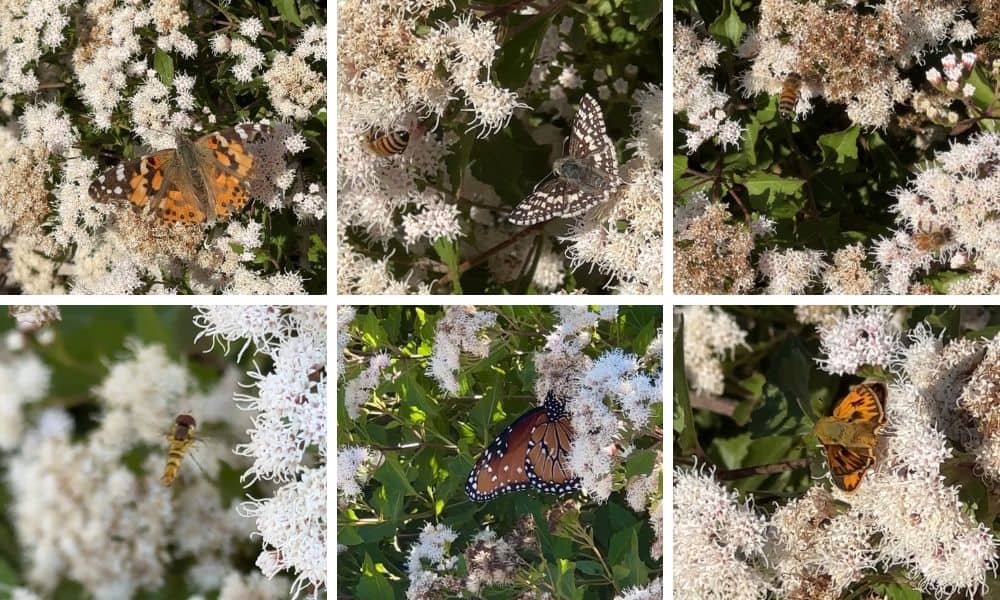
It is not uncommon to spot 10 or more different kinds of pollinators nectaring on its pinkish-white flowers at the same time! Bonus: its fragrant flowers smell amazing!
2. It is a butterfly host plant
In addition to being a critical nectar source, Shrubby White Boneset is also a host plant for the Rawson’s Metalmark butterfly. Its caterpillars rely on the leaves of this plant for their food!
2. Pretty shrubby plant
I think White Mistflower is a beautiful addition to a native plant garden even when not in bloom. The rounded deciduous shrub tends to grow in a denser shape than other native shrubs – growing 2-4 feet tall on average.
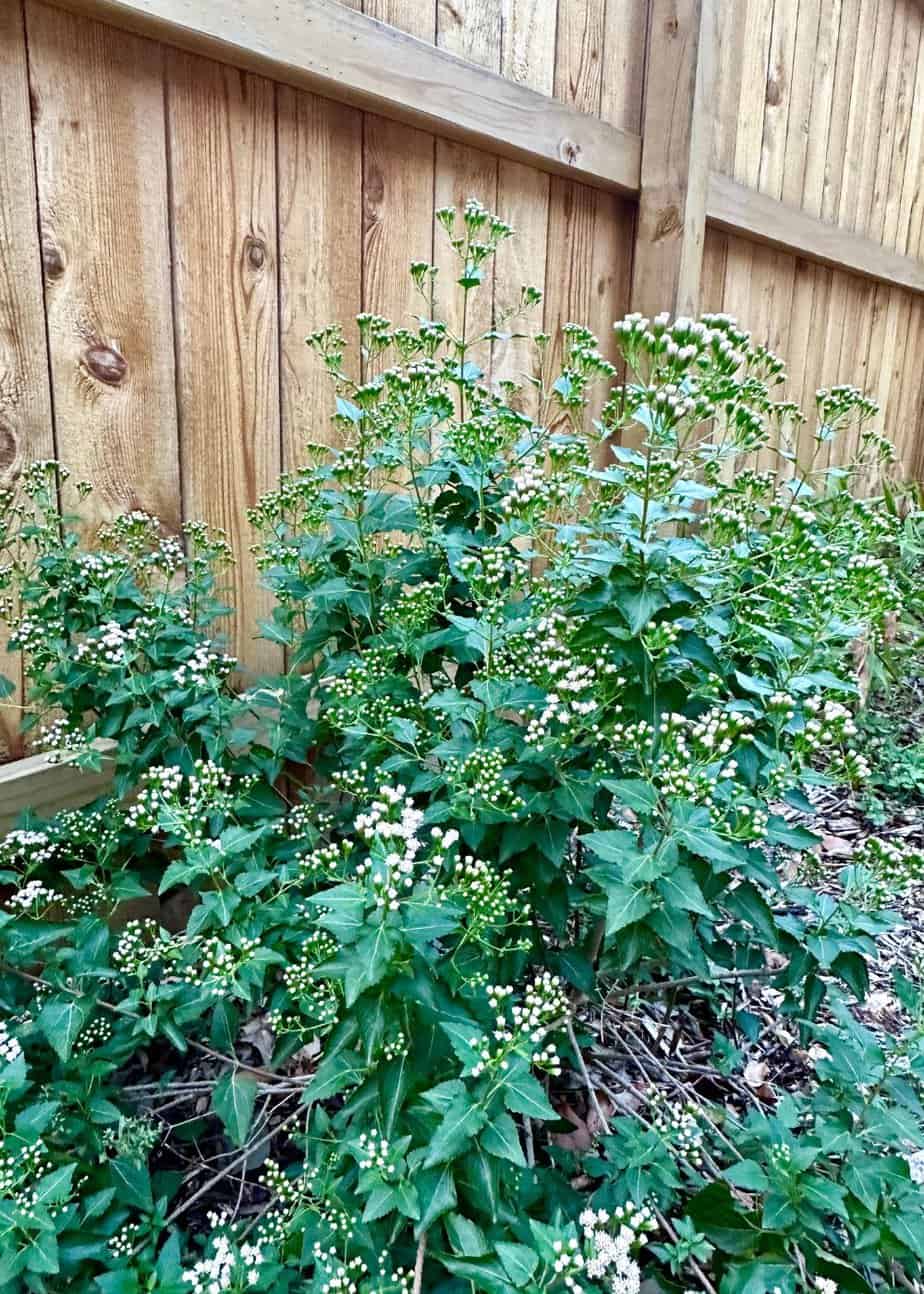
It can handle a heavy shearing in early spring to help keep its shape and promote more blooms. Its dark green triangular-shaped leaves are also very attractive.
3. Drought tolerant
Another good reason to grow White Mistflower – it doesn’t need much water once established! Its native habitat is the rocky limestone hills of the Texas Hill Country, so it thrives in dry soil with good drainage.

Shrubby Boneset pairs well in a garden with other native drought-resistant perennials such as Texas Lantana and Autumn Sage.
4. Deer resistant
It turns out Ageratina havanensis is one of the best deer resistant plants around! Deer find its foliage unpalatable. I know a lot of Texans deal with deer, so definitely add this to your list to try along with these suggestions for deer-resistant plants.
5. Performs well in shade
White Mistflower is a versatile plant. It can handle full sun, but it also thrives in partial shade. I recommend it for shady areas of your yard along with these other great native Texas shade plants.
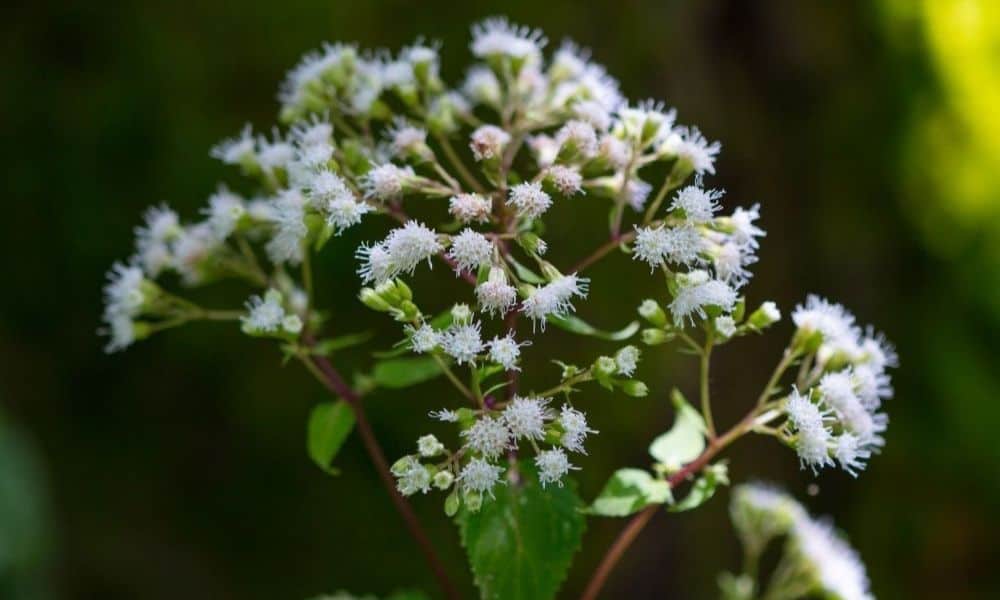
Names for Ageratina havanensis
Plant names can be confusing, often leading to head scratching at the nursery. White Mistflower is a great example. While plants can have many common names, they typically only have one scientific name. However, White Mistflower goes by two – Ageratina havanensis and Eupatorium havanense. Look for one of these scientific names on the plant label to make sure you’re getting the right plant.
Its common names include Shrubby Boneset and Havana Snakeroot.
Other Mistflowers to Try in Your Garden
To add to the confusion, there are a variety of other mistflowers native to Texas. White Mistflower (Ageratina havanensis) is one of several native Eupatorium species. All these below are also excellent additions to your pollinator garden!
- Fragrant Mist Flower (Chromolaena odorata) – native to Texas Gulf Coast and parts of Florida. Important fall nectar source for Monarchs passing through south Texas.
- Blue Mistflower (Conoclinium coelestinum) – wide native range spanning from east and north Texas through much of the eastern United States. Has light purple blooms.
- Gregg’s Mistflower (Conoclinium greggii )- quite possibly my favorite native nectar plant, Gregg’s Mistflower is a must for any butterfly garden. Similar to Blue Mistflower, but native to the Edwards Plateau region of central Texas.

Download the Free PDF: Native Nectar Plants
Want all the pollinators in your yard? I created a handy one-page PDF for you to print and take along with you to the plant nursery. It includes a thumbnail photo of each plant along with both its common and scientific name, shade requirements, and other helpful growing info. Get it here:
Save this plant idea to Pinterest!

Welcome to Native Backyards! I’m Haeley from San Antonio, Texas, and I want to help you grow more native plants.
I have seen firsthand how the right plants can bring your yard to life with butterflies, bees, and birds. I’ve transformed my yard with Texas natives and I’m excited to share what I’ve learned with you.
Join my newsletter here! – each week I’ll send you helpful tips to make your native plant garden a reality!
Want to learn more about me and my garden? Check out my About page!
